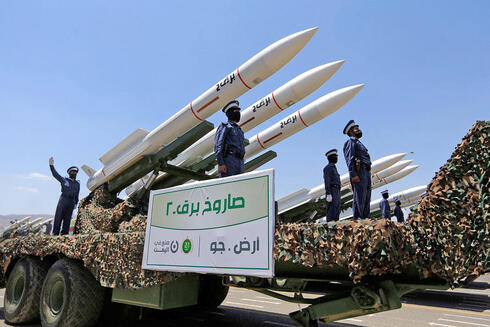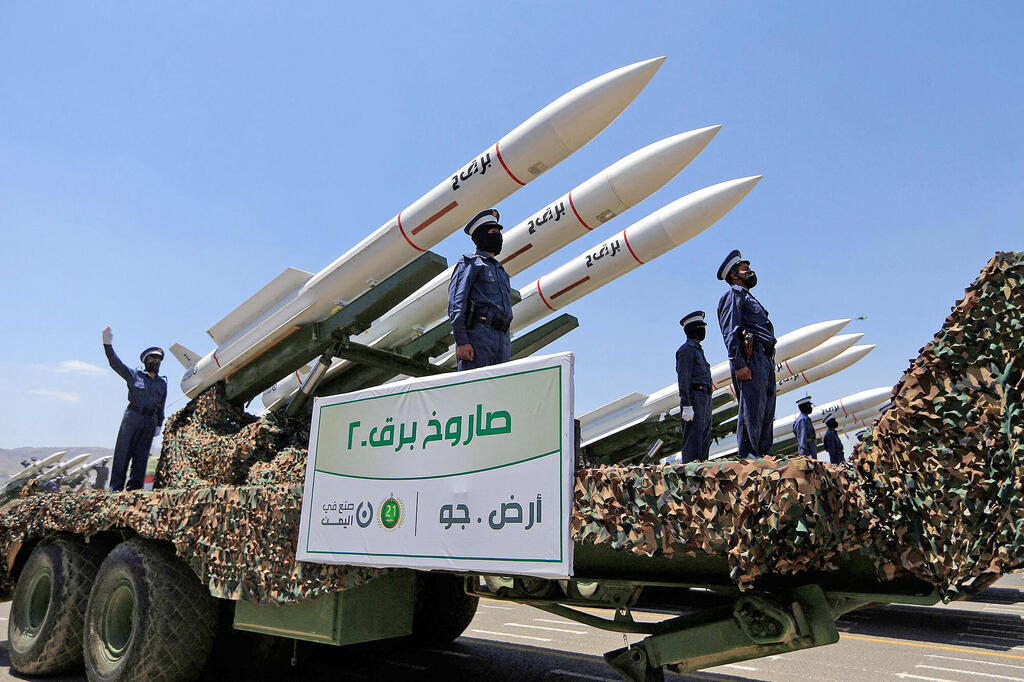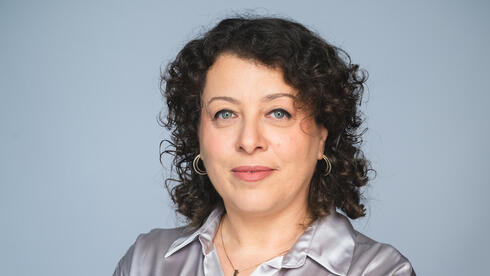
ISRAEL AT WAR
Know your enemy: Houthis from Yemen are Israel’s new terror threat
Since the beginning of the war in Gaza, another threat to Israel has been added from the South - the Houthis in Yemen. Since they took over the country they have enjoyed money and military cooperation with Iran in creating a Shia resistance axis in the Middle East
As the days go by in the war against Hamas in the Gaza Strip, the involvement of the Houthis from Yemen is increasing. So far we know of at least three cases in which ballistic missiles and UAVs were launched from Yemen towards Israel, including this afternoon.
Who are the Houthis anyway?
At the end of the 1990s, the Houthi family in Northern Yemen founded a "religious revival movement", whose goal was to fight the Sunni central government in Sana'a. The Houthis belong to a small branch of Shia - the Zaidi branch, and religiously there are differences between them and the Shias in Iran, Iraq, and Lebanon. When the movement was founded, the Houthis were considered a marginal phenomenon in Yemen, but over the years they began to increase their guerrilla operations against the Yemeni army.
1 View gallery


A missile truck in a parade to mark the Houthis' takeover of Yemen
(Photo: MOHAMMED HUWAIS/AFP)
The American invasion of Iraq in 2003 was a turning point in the history of the Houthis, who underwent significant radicalization, like other organizations in the region. The Houthis then adopted an official name - "Ansar Allah" (Supporters of Allah) and presented their slogan: "Allah is the greatest, death to the USA, death to Israel, curse to the Jews, and victory to Islam".
The Shiite Hezbollah organization became a role model for the Houthis, and Hassan Nasrallah's men began to provide the Houthis with assistance, including military training. Relations also began to develop with Iran, which saw the Houthis as having the potential to destabilize Saudi Arabia, the Sunni leader and arch-rival in the region.
The "Arab Spring" in 2011 strengthened the position of the Houthis, who took advantage of the weakness of the central government in Yemen and with the help of various alliances became a force that could not be ignored. In 2014, fighting began for the capital Sana'a, and in early 2015 it fell to the Houthis who became the rulers of Yemen, with the exception of a government supported by Saudi Arabia and the Emirates in the Aden province in Southern Yemen.
For Iran, against Saudi Arabia
With the Houthis taking over Yemen, they announced the opening of direct flights to Tehran. In response, the Iranians announced that they would assist the Houthi regime in supplying cheap oil, and leaders from both sides issued statements about expanding cooperation.
As far as Saudi Arabia was concerned in 2015, with a young defense minister named Mohammed bin Salman, the Houthis were considered on the one hand a threat but on the other hand easy prey militarily. Bin Salman ordered his army to begin a military operation against them, which was mainly based on aerial strikes. The predictions were then that the Houthis would be defeated within a few weeks. In practice, as the campaign continued, the Saudis became more and more entangled. The Houthis upgraded militarily with the help of Iran and Hezbollah, and began hitting the Saudis, including launching ballistic missiles and UAVs into the city centers in the kingdom.
The war with the Houthis not only resulted in many casualties for the Saudis but also severely hit the Saudi economy with huge war expenses and investor fear for the future of the Saudi economy. At the end of 2022, a temporary ceasefire was announced between the Saudis and the Houthis, although the parties are having difficulty reaching a permanent ceasefire and tensions continue. The reconciliation between Saudi Arabia and Iran earlier this year was supposed to pave the way for an agreement, but it has not yet happened.
Iran regards the Houthis as part of the regional axis of resistance, but the Houthis are careful to emphasize their independence in decision-making. Although the Houthis share a common political vision with Iran and Hezbollah, they claim that they are also motivated by an internal agenda.
What is their military capability?
The Houthis have taken over the Yemeni army and according to estimates have hundreds of thousands of fighters under their command. In the past, it was reported that Houthi fighters came to Syria and Lebanon mainly for training purposes. In terms of the ability to threaten Israel, the Houthis' missile arsenal includes the "Quds 2", a cruise missile that the Houthis claim is manufactured in Yemen. According to what is known, the range of this missile, which came into use about three years ago and was used in the war against Saudi Arabia, reaches about 2,000 km - which is also more or less the distance from Yemen to Israel. They also have a "Samad 3" UAV that can reach a range of about -1,900 km. This is a "suicide" UAV, which can carry four bombs and seems to be used these days against Israel.
Another threat from the Houthis is at sea. The Houthis were supplied with vessels by Iran and in the past they threatened that they could threaten the maritime traffic through Bab al-Mandab Strait, the gateway to the Red Sea.
Sources of funding
The takeover of the country's resources makes the Houthis today the richest terrorist organization in the world. Every year billions of dollars reach their hands, which helps them to fortify their rule and military power. According to reports by UN experts, the Houthis rely on seven main sources of funding: customs and other taxes; non-tax revenues as well as zakat (charity); confiscation of land and other property; revenues from fuel trade on the black market and smuggling of other products; taxes on fuel imports which are estimated at about $600 million a year, internal trade and other commercial activities; confiscation of bank deposits (over $3 billion); and funding from foreign sources (mainly Iran and other donors).













